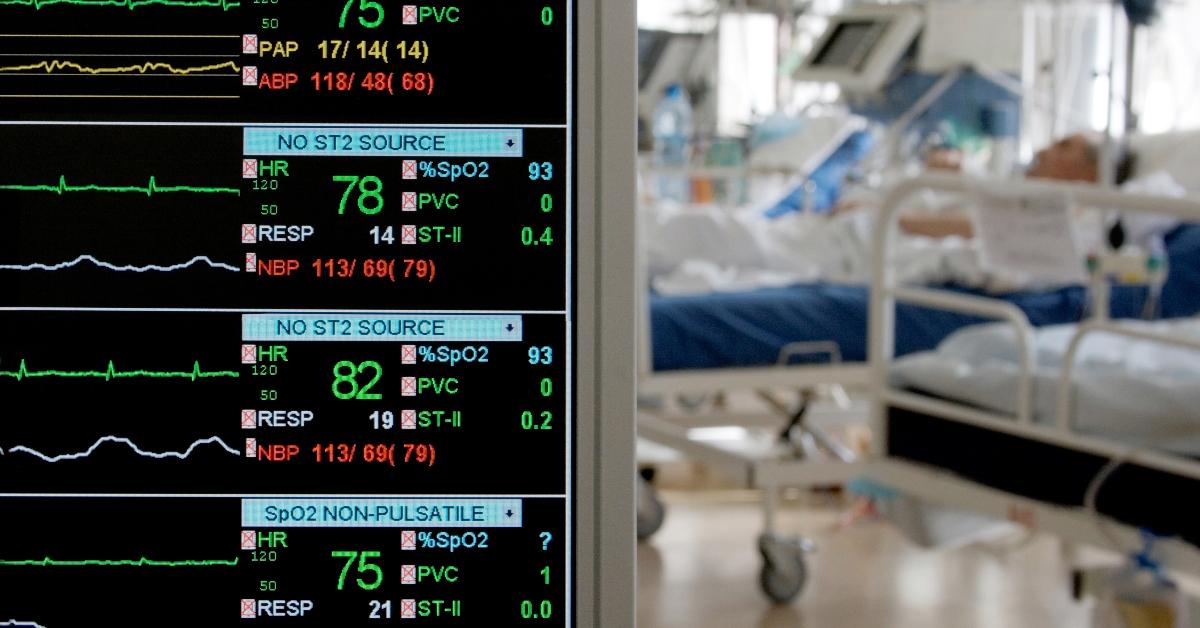Healthcare providers have known for years that contact between patients and family members are essential for good outcomes during intensive care unit (ICU) stays. The ABCDEF bundle is generally accepted as best practice in ICU care. The F stands for “family engagement and empowerment.”
Yet, most (if not all) ICUs threw this practice out the window during covid. Family engagement and empowerment is not merely a humanitarian gesture but is necessary for the optimal care of ICU patients. For covid patients, who generally arrive in the ICU due to hypoxemia, family engagement and empowerment is often necessary to successfully treat the hypoxemia.
ICU physicians are obsessed with oxygen saturation. SpO2 stands for oxygen saturation measured by pulse oximetry. There are good reasons to be concerned about SpO2. The relationship between the oxygen content of blood and SpO2 is not linear but is known as the oxygen-hemoglobin dissociation curve. Above an SpO2 of 90 percent, the curve is flat, so there is little extra benefit of SpO2 above 90 percent. Below 90 percent, however, the curve is steep, so there is considerable loss of oxygen-carrying capacity for an SpO2 less than 90 percent. Ceteris paribus (all other things being equal), we would all prefer an SpO2 of 90 percent rather than an SpO2 of 80 percent.
As students of the Austrian school of economics are aware, however, all other things are never equal. The means used by healthcare providers to achieve an SpO2 of 90 percent in covid patients in the ICU can be so intolerable that perfectly rational people will physically disengage from the therapy irrespective of the adverse effects to their long-term health.
At the low end of the treatment scale, supplemental oxygen delivered by low-flow nasal cannula is generally well tolerated, and patients usually cooperate with the therapy. However, when nasal cannula low-flow O2 is inadequate to achieve an SpO2 of 90 percent, more invasive means are used. The next step, in current practice, is usually some type of bilevel positive airway pressure (BiPAP) device delivered by a mask covering the nose and mouth. The more easily tolerated nasal mask that does not cover the mouth is rendered useless without complete cooperation by the patient by keeping the mouth closed.
A few patients easily adapt to BiPAP, but many pull the mask off as soon as they are able. I have been caring for patients with sleep apnea using continuous positive airway pressure (CPAP) and BiPAP devices for forty years. Despite my knowledge of respiratory physiology and experience with this therapy, it took me six weeks to become sufficiently acclimated to the CPAP device that I would wear for a full eight hours to treat my own sleep apnea. How can we expect patients who are in unfamiliar surroundings, in distress, and fearful for their survival to tolerate this therapy? Nurses will reposition the mask, but a less-than-eager patient quickly becomes a nuisance to the nurse. When persuasion fails, sedation and restraints follow.
If the patient associates the BiPAP mask with punishment or torture, we have already lost the battle. Rather than bullying patients into compliance with our well-intended commands, we should be trying to understand why the patient will not wear the device. We should be sympathetic to the discomfort of the device, permitting the patient to take a break and offering encouragement to try again after a rest period. Physicians should try eating while wearing a BiPAP mask. There are necessary activities that offer natural breaks from the BiPAP. People can live at high altitudes with less-than-optimal SpO2 for long periods of time. Although our concern about SpO2 of less than 90 percent has a rational basis, an obsession with SpO2 to justify methods known to produce psychosis, delirium, and long-term cognitive impairment is barbarism.
No physician or nurse wants the treatment to be accepted more than the family members of the patient. Rather than isolating patients from family members, we should be recruiting family members to assist with applying supplemental oxygen therapies. Patients on BiPAP are in two states: a state of better gas exchange while using the device and a state of worse gas exchange while not using the device or where the mask is leaking due to suboptimal positioning. The overall effectiveness of BiPAP depends on what percentage of time the patient is effectively using the BiPAP.
Family members will achieve better effectiveness than any nurse or physician. If the patient survives the ICU, many patients will require BiPAP therapy at home. If the patient associates BiPAP with torture, it will not be used, so a never-ending cycle of readmission for respiratory failure will develop. There is a reason that the term “ICU liberation” has appeared in association with ABCDEF policies. The patient will properly use the BiPAP at home only if the patient has accepted the therapy on their own terms.
Whenever I discuss the above issues with students, the immediate Pavlovian response is, “We are trying to protect our patients.” Protect the patients from what? The patient already has covid. The response is quickly modified to protect the families from contagion. The families have been in close contact with the patient for days or weeks during the infection. They are probably already exposed. Most people who are exposed to covid are completely unaware of the exposure because they never get sick.
Even if the family has not been exposed, it is their risk to either accept or refuse. We do not forbid firefighters from entering a burning building. Firefighters accept the risk of fire because it is their job. We should not forbid family members from volunteering to accept the risk of contagion in order to care for their loved ones. The family member feels a duty or obligation to offer comfort and assistance to their loved one. As the Tim McGraw lyrics say: “Take the very breath you gave me / Take the heart from my chest / I’ll gladly take her place if you’ll let me / Make this my last request / Take me out of this world / God, please, don’t take the girl.”
Healthcare providers are trying to help patients, but we can do much better than we did during the covid pandemic.




